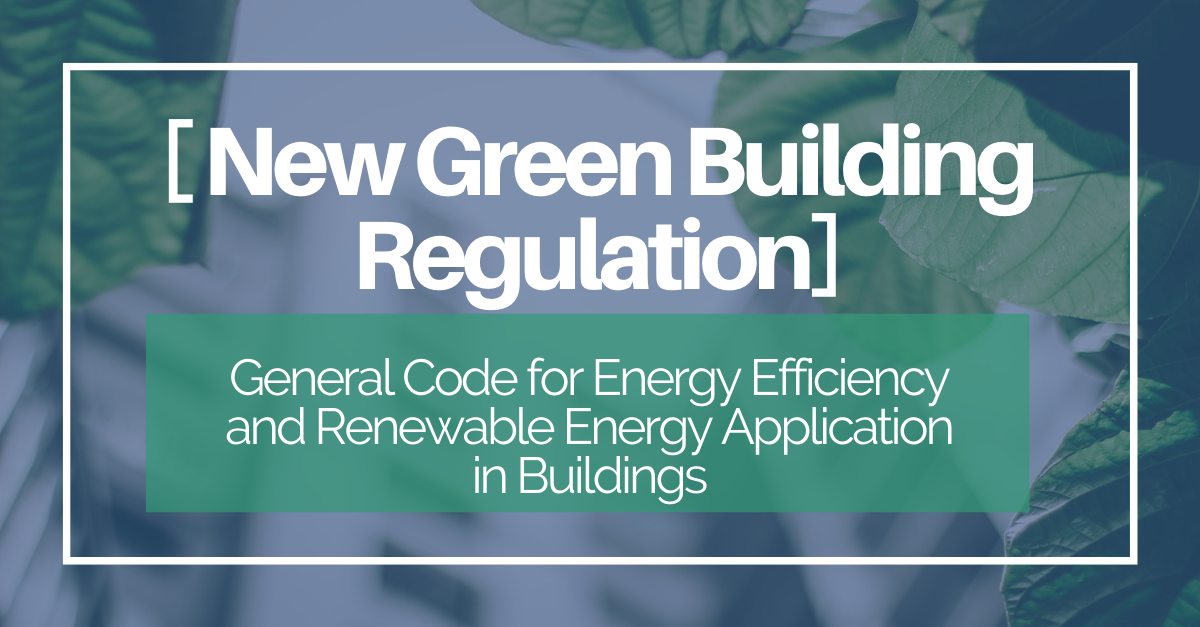Do you want to have a look at these new green building regulations and understand how they are helping China reach its implement its environmental strategy?

Read this article and you will know!
The buildings and construction work in China contribute more than half of the total carbon emissions nationwide. To meet China’s ambitious carbon reduction targets, reaching carbon neutrality by 2060 and peak carbon emissions by 2030, a new regulation mainly focusing on energy efficiency and carbon footprint took effect on April 1, 2022.
It is noted that this new General Code is mandatory, and all provisions must be strictly implemented. When the relevant provisions of the previous construction standards are inconsistent with this new policy, they shall be abolished and this latest policy shall be implemented.
Here are some popular questions related.

Question 1: Does it apply to both new construction and renovation projects?
Yes. The scope of this regulation applies to civil buildings and industrial buildings (new buildings, reconstructions, expansions, and renovations based on the existing buildings).

Question 2: Is it mandatory to do the energy efficiency and carbon footprint calculation?
Yes. Three reports (i.e., energy consumption report, renewable energy usage report, and carbon footprint reports) need to be included as part of the feasibility study report, construction plan, and preliminary design documents of construction projects. As a result, they need to be submitted at the early stage of the projects.
What’s more, the design, construction, acceptance, and operations management of energy-saving and renewable energy systems must comply with this code. Carbon emissions will be determined based on the carbon emission factors of different energy types (i.e. electricity, coal, gas, etc.).
Question 3:What does the energy efficiency calculation include?
The calculation range covers heating, air conditioning, lighting, domestic hot water, elevators, and renewable energy (i.e. Photovoltaic, wind power, air/soil/water source-solar heat pump, etc.). Cooking and sockets are excluded.
Question 4: Are quantitative requirements for energy efficiency and carbon footprint introduced?
Yes. The content of energy measurement and monitoring is specified. In China, it is the first clear mandatory standard for carbon emissions from buildings and construction work.
The requirements for energy-saving and carbon emission intensity are more strict and clear quantitative indexes are provided.
Question 5: Are there any interesting measures related to energy efficiency?
Giving priority to passive measures, such as natural lighting, natural ventilation, and so on. The new buildings must install solar systems. The lifetime of solar collectors in the solar thermal systems should be over 15 years. The lifetime of photovoltaic modules in the solar photovoltaic system should be over 25 years.
Question 6: Is it mandatory to reduce the project’s carbon emissions?
Yes. As mentioned in Question 4, this new regulation solves the problem of the lack of clear quantitative index requirements for building carbon emissions in the past.
According to this regulation, the carbon emissions intensity indicator of new civil buildings should be reduced by 40% on average compared with the standards implemented in 2016, which equals more than 7kgCO2/(㎡·a). Thus, when the carbon emissions intensity is over the quantitative requirements, it is mandatory to reduce the project’s carbon emissions.
Note: 7kgCO2/(㎡·a) is an average value. In detail, the average carbon emissions intensity of residential buildings should be decreased by 6.8kgCO2/(㎡*a), and the average carbon emission intensity of public buildings should be decreased by 10.5kgCO2/(㎡*a).
Question 7: Can TERAO conduct energy audits and carbon footprint calculations?
Sure. We would be glad to help you do the energy audits and carbon footprint calculations
This regulation solved multiple issues in the existing green regulatory framework in China. We hope you are more familiar with it now!

If you need more details, please do not hesitate to contact Gaspard Lemoine-Scelles, our Business Development Manager, at this address glemoinescelles@teraoasia.com. It would be a pleasure for us to accompany you on the assessment of your assets’ energy performance and the calculation of their carbon footprint, as well as the implementation of reduction action plans.
Written by Crystal Ren




Leave A Comment